You're setting up your rod and reel to go fishing, but don't know what line you should be using — or why? Let's break it down so you can catch more fish.
The three most common line types are monofilament (mono), fluorocarbon (fluoro), and braided fishing line.
Before we decide which line to use, let's look at the differences between them so you understand why these might change depending on your situation.
Mainline vs leader
Most anglers start fishing with a single type of line spooled on their reels. This is referred to as the mainline since it takes up all or most of your spool's line capacity.
If you use a mainline with no leader at all, this is called running a line straight-through — and for many anglers, this is all they need.
If you start fishing with lures, for specific species, or in more difficult environments — pairing your mainline with a leader will give you some more options.
A leader line is a length of line tied to the end of your mainline that connects directly to your bait, jig or lure. A leader line is either a different material or a different line weight. This is done to provide a particular advantage the mainline doesn't have, or to compensate for a disadvantage of the mainline.
Is leader line different to mainline?
When purchasing your fishing line, many manufacturers will market specialist leader lines in smaller lengths.
There is no difference when lines are branded as leader or mainline. You do not need to buy leader branded line, it is much cheaper to buy a big spool of monofilament or fluorocarbon mainline and use this as your leader.
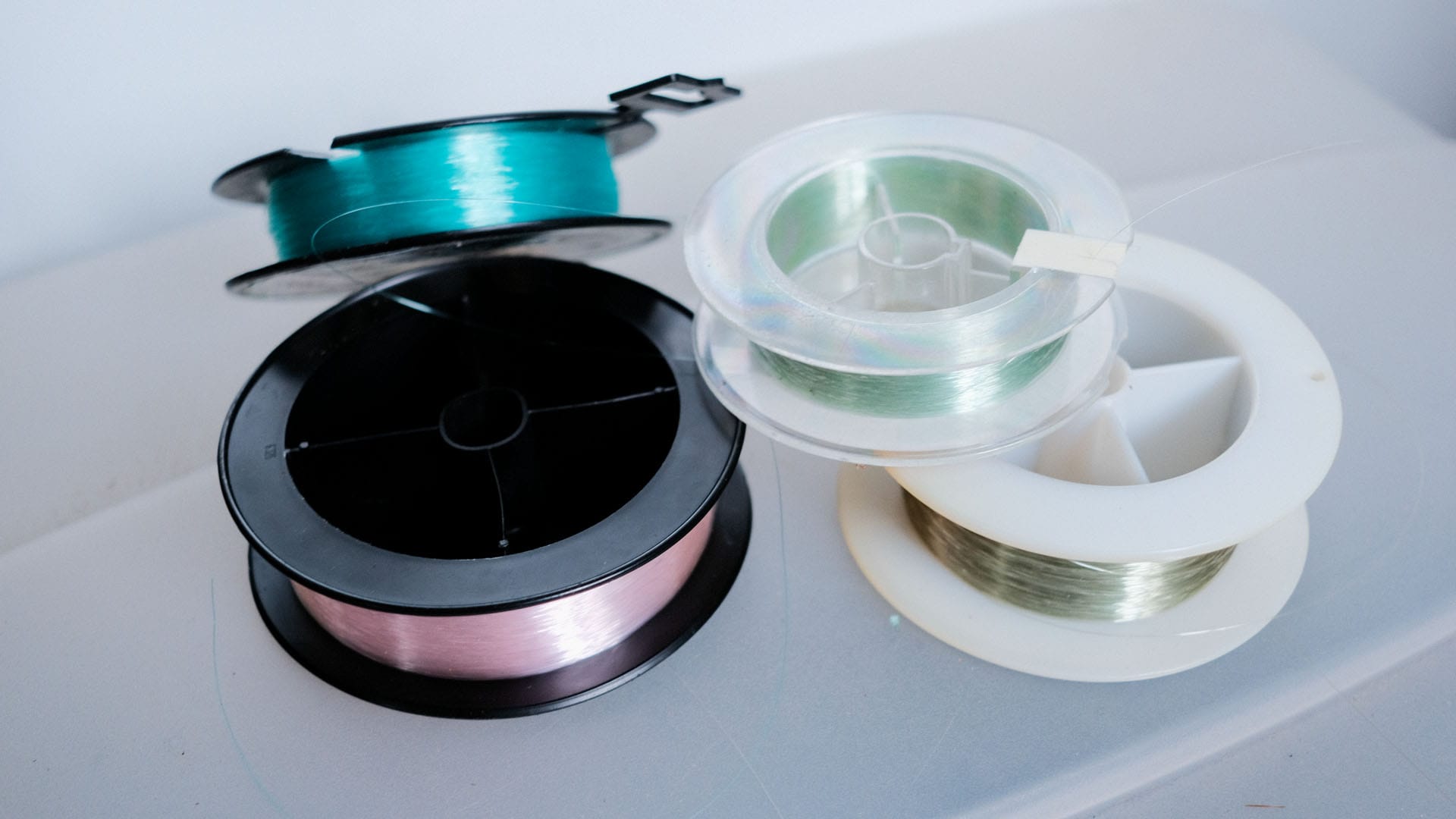
Mono
Monofilament is the most common and best all-around fishing line on the market. It's relatively affordable and provides all the advantages needed for most types of fishing.
If you're just getting into fishing, or primarily fish with baits, mono will be ideal. It's also one of the best choices as a leader for lure fishing when paired with a braided mainline.
Advantages
- High stretch: Mono fishing line has a natural stretch to it, which allows it to absorb big hits and runs better than other lines.
- Floats: Monofilmanet line has a slower sinking rate than other lines, so it is ideal for fishing at the top of the water column or with topwater lures.
- Price: Mono is very affordable as both a mainline or leader.
- Good visibility: Mono line is hard to see in the water, making it better than braided line but not as good as fluoro line for being detected by fish.
- Best abrasion: Monofilament fishing line has the best abrasion resistance — higher even than fluoro. This has been proven multiple times with abrasion tests.
- Flexible: Being more flexible allows for easier and better knot tying.
- Good casting: Since monofilament line isn't as dense, it casts better and further than fluorocarbon, but not as good as braid.
Disadvantages
- UV breakdown: Mono fishing line is prone to UV damage. It needs to be replaced every few years, or it will start to go brittle and weaken.
- Poor sensitivity: Due to being stretchier and more flexible, the line is less sensitive for feeling small bites or structure.
- Line memory: Mono line has spool memory, meaning it will coil and twist over time as it winds on and off your spool. This can contribute to casting knots in high wind.
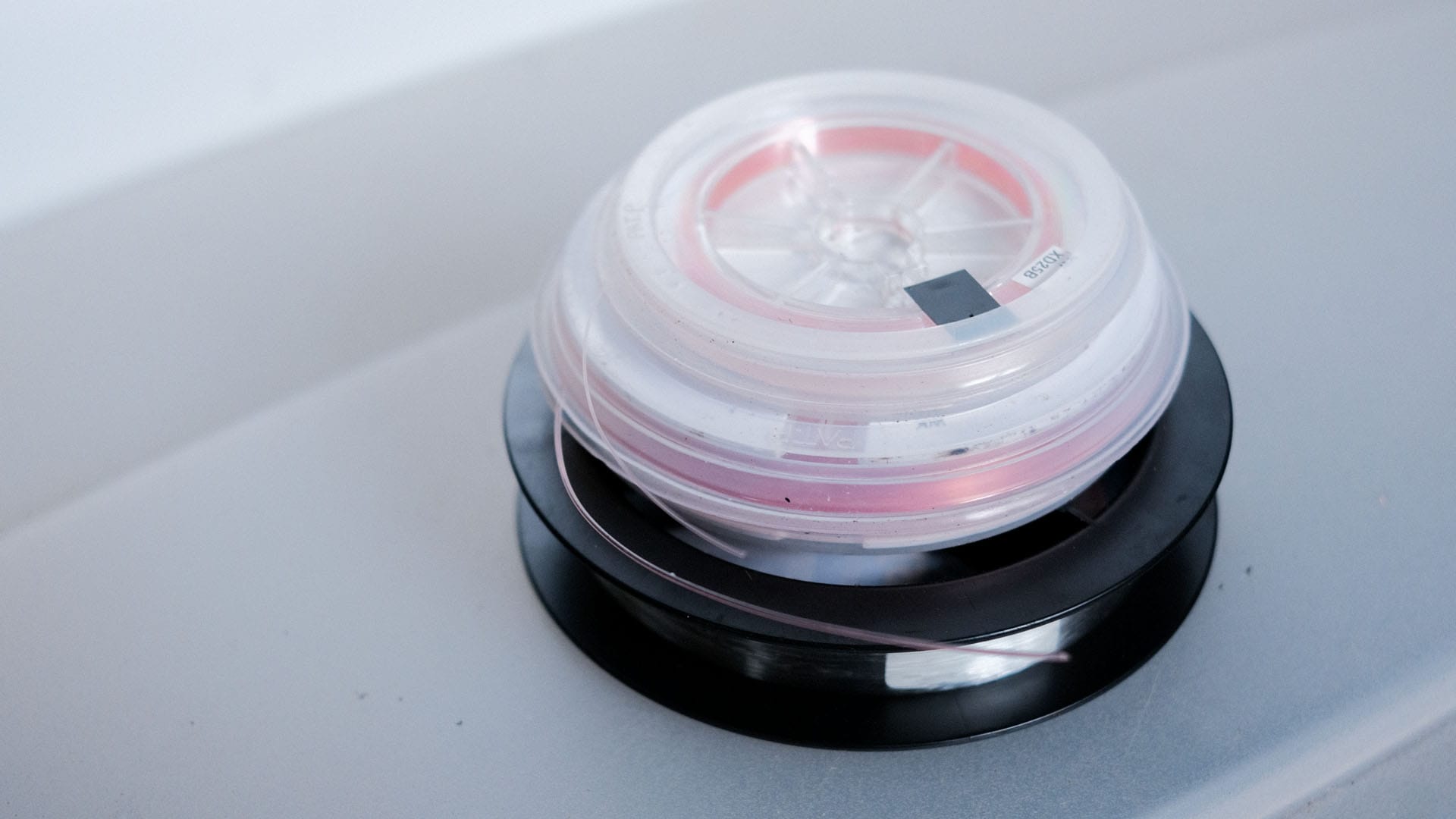
Fluoro
Fluorocarbon is an alternative mainline or leader line that is used by some anglers in specific circumstances. It is more expensive than mono, and goes some way to bridging the gap between mono and braid.
If you're fishing in very clear or deep water, fluoro line may be the best as a leader combined with a braided mainline.
Advantages
- Best visibility: Fluoro line is the most invisible in the water, so it is popular when fishing in very clear water or for more cautious fish species.
- Sinks: As a denser line, fluorocarbon sinks well and is ideal for deeper water or bottom fishing.
- Good abrasion: Fluorocarbon line has good abrasion resistance, but not as good as monofilament. It is better than braid, which is why it's often paired as a leader material.
- Low stretch: While line stretch can be an advantage, low stretch is also beneficial when you want more responsive action when lure fishing.
- UV resistant: Fluoro line is UV resistant, which means it will not break down and weaken with long-term sun exposure.
Disadvantages
- High cost: Fluoro line as both a leader and a mainline is very expensive, often 3-4x the cost of a comparable monofilament line.
- Poor casting: Due to being a denser line, fluorocarbon casts more poorly than monofilament.
- Line memory: Similar to monofilament line, fluoro line has spool memory. This can contribute to casting knots in high wind.
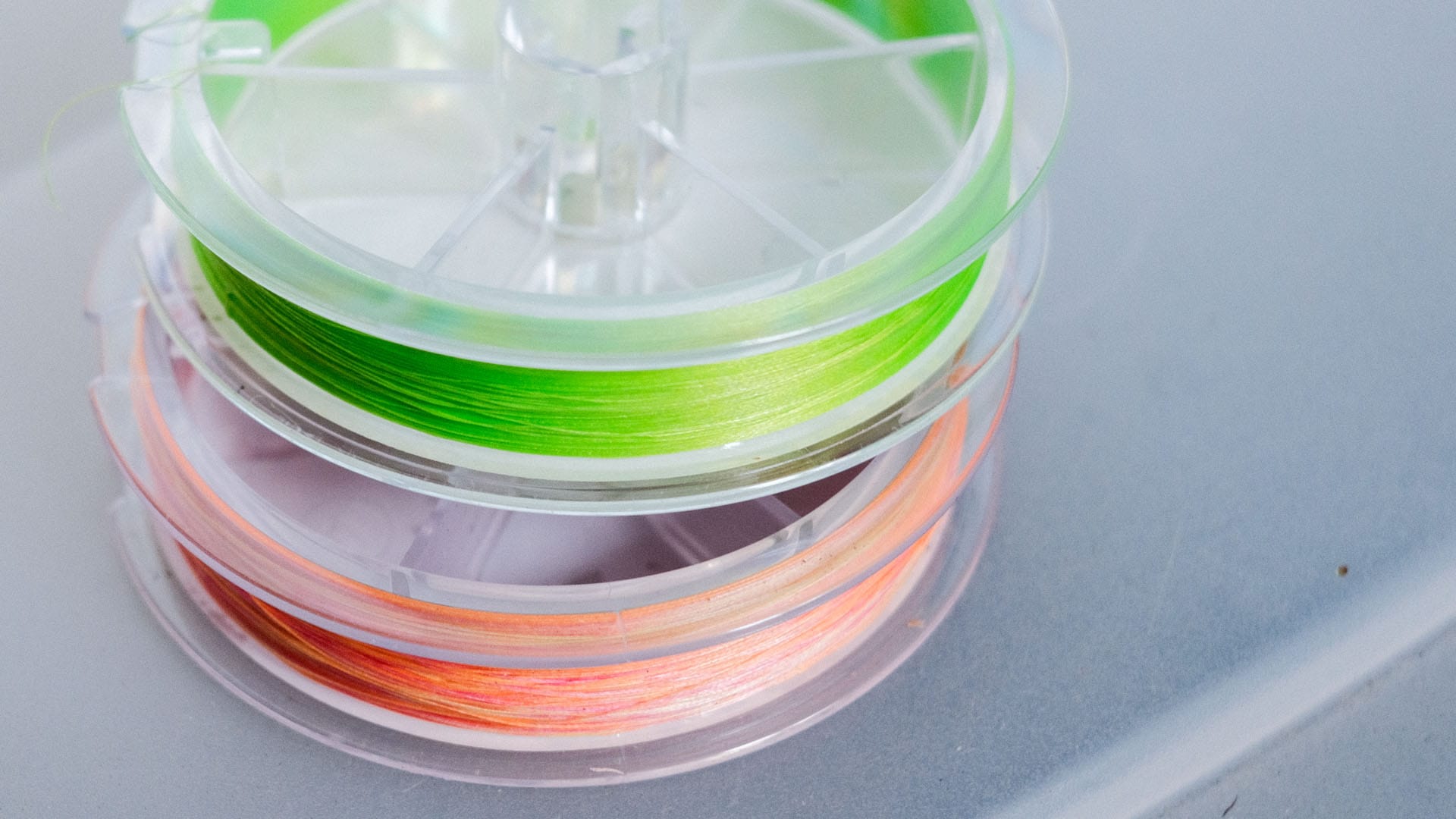
Braid
A braided line is a thinner, stronger fishing line that excels as a mainline due to its superior strength, weight and casting ability.
Braid is rarely run straight-through as a single line — and is more often paired with a mono or fluoro leader — due to its poor abrasion resistance and visibility in the water.
Advantages
- Best casting: Due to its thin diameter, braid line is the best casting line available and outperforms both mono and fluoro.
- No stretch: Braided line has zero stretch, which provides very high sensitivity for lure fishing.
- Very strong: A very high strength to weight ratio, braided line is the strongest and thinnest fishing line available.
- No memory: Braid has no spool memory, so will not coil or contribute to wind knots when casting.
- Long life: Braid line will last a very long time as a mainline and can often be spooled and not changed for many years, since all wear is on the replaceable leader line.
Disadvantages
- Poor abrasion: Braided fishing line has poor abrasion resistance and is more likely to tear or break against structure and sharp teeth.
- High cost: Braided line is more expensive than monofilament as a mainline, but makes up for this with its longevity.
- Poor visibility: Because braid is a solid fibre, no light passes through, which makes it more visible in the water and can spook some fish species.
- No stretch: Despite being an advantage in some situations, no stretch can be a disadvantage if using braid as a straight-through mainline — resulting in more line breaks and pulled hooks since there is no shock absorption in the line.
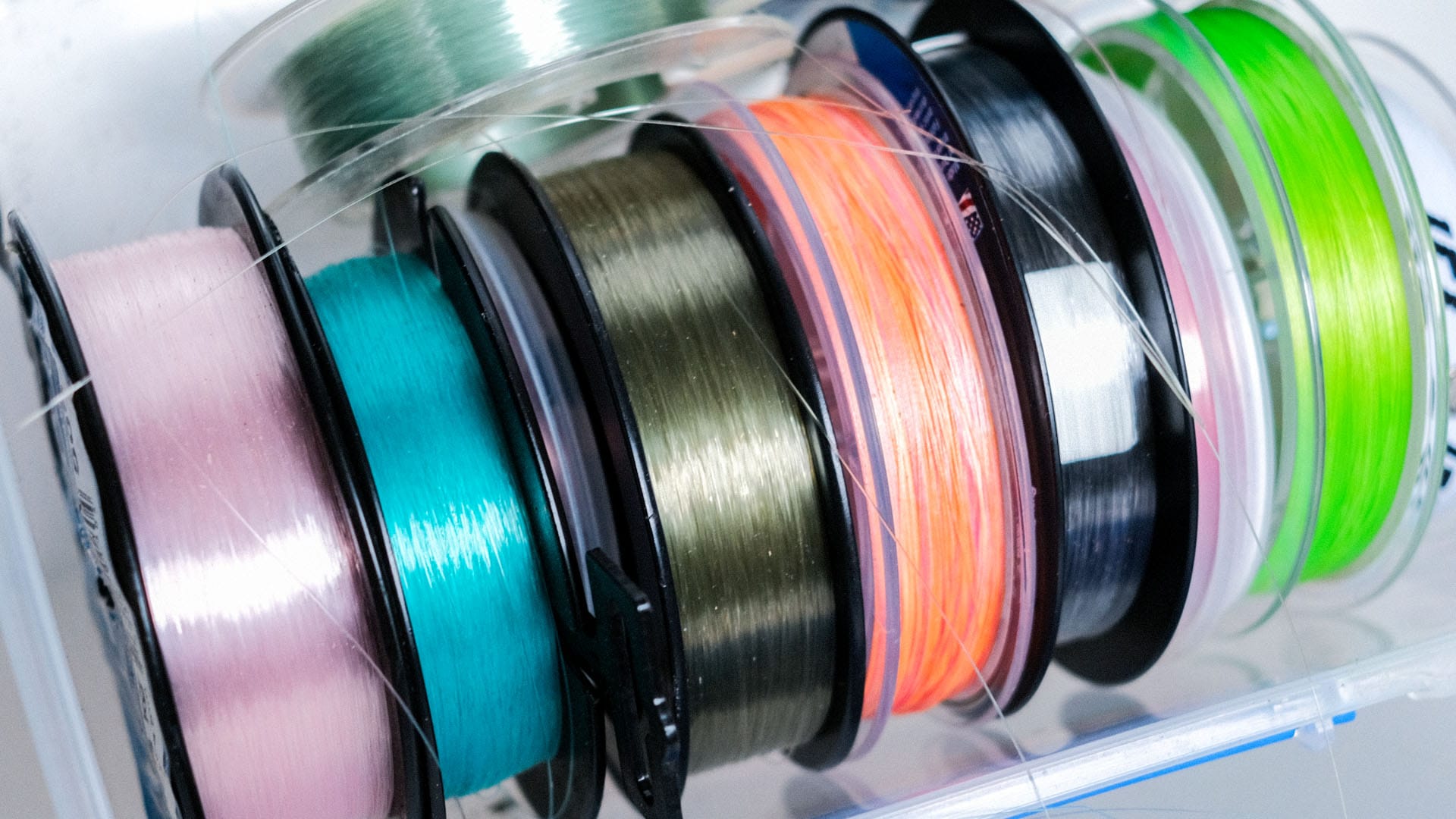
What to use and when?
That's a lot to know, so what does it all mean and what line should you be using? As usual, it depends — so here are some common situations to get you sorted.
- Beginners: mono straight-through
- Bait fishing: mono straight-through
- Top water lures: braid mainline with mono leader
- Mid water lures: braid mainline with mono leader
- Bottom lures: brain mainline with fluoro leader
Some of these can change due to the environmental conditions or the types of fish you are targeting.
- In structure: braid mainline with mono leader, or mono straight-through
- Around rocks: braid mainline with mono leader, or mono straight-through
- Clear water: braid mainline with fluoro leader, or fluoro straight-through
- Big species: braid mainline with mono leader, or mono straight-through
- Bream: braid mainline with fluoro leader, or fluoro straight-through
- Flathead: braid mainline with mono leader, or mono straight-through
- Mangrove jack: use mono leader or mono straight-through
Of course, as you get more experienced, you will begin to experiment and try different setups for more specific types of fishing — and more importantly — your style of fishing.
So, there is no right or wrong way, but these should give you a good starting point and help you save some money when setting up your line and leader.
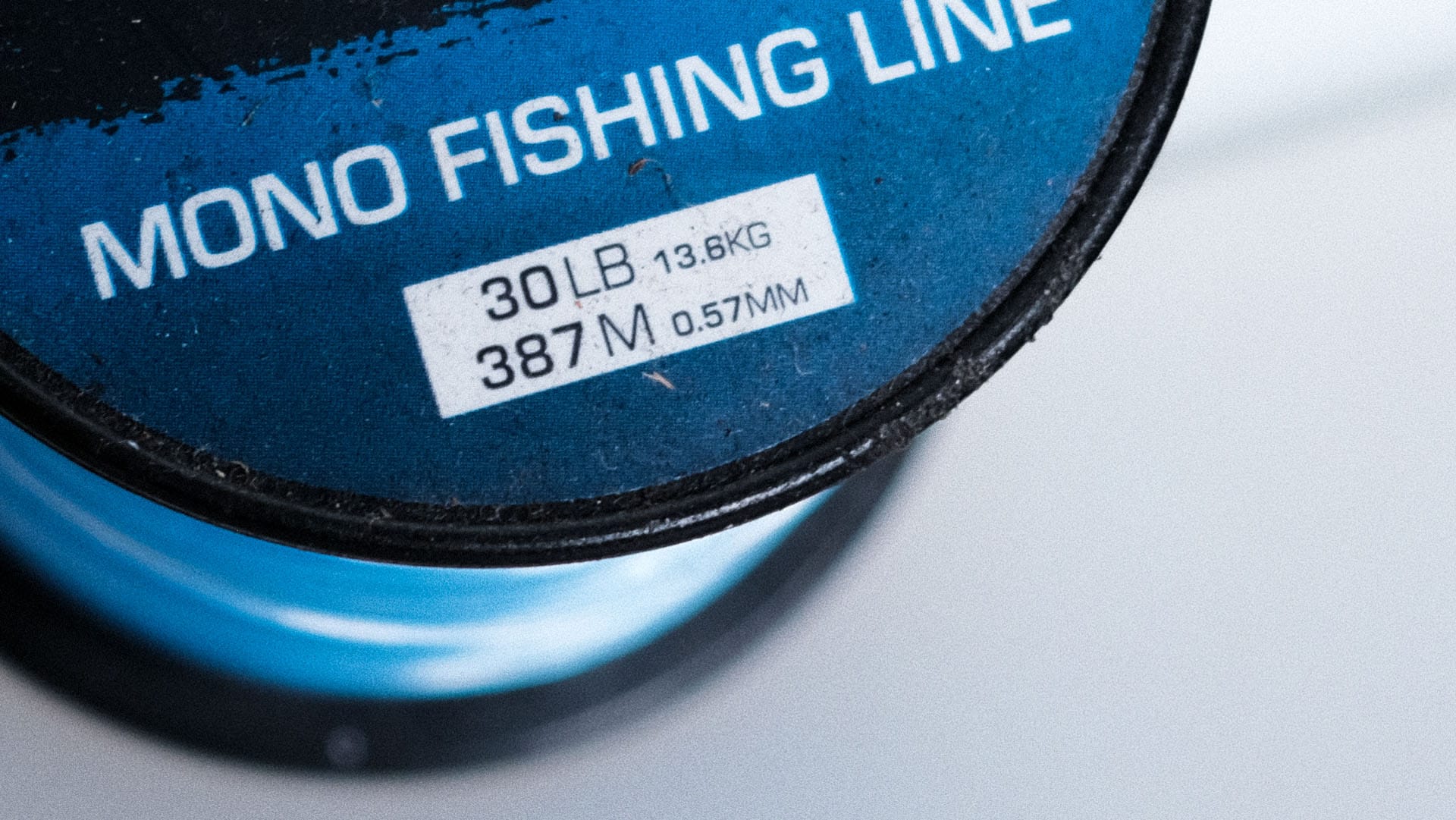
Other things to know
Line diameter
Line diameter is how thick your fishing line is, and this is the best standard to use when comparing different lines.
Line diameter is measured in either mm (millimetres) or PE. The PE rating is a uniform rating system for braided line.
| PE (#) | DIAMETER (MM) |
|---|---|
| 0.4 | 0.100 |
| 0.6 | 0.128 |
| 0.8 | 0.148 |
| 1 | 0.165 |
| 1.5 | 0.205 |
| 2 | 0.235 |
| 2.5 | 0.260 |
| 3 | 0.285 |
| 3.5 | 0.310 |
| 4 | 0.330 |
| 5 | 0.370 |
| 6 | 0.405 |
| 8 | 0.407 |
| 10 | 0.520 |
| 12 | 0.570 |
| 14 | 0.620 |
A thinner line will cast further and have lower visibility in the water. It may also have a lower weight rating and lower abrasion resistance.
A thicker line will have a much higher weight rating, but will be easier for fish to detect in the water and will not cast as far.
When comparing different brands of braid, mono and fluoro line to find the best match for your setup, it's important to compare these based on line diameter first.
Comparing lines based on their weight rating (see below) may result in choosing a lower-performing fishing line because the line diameters are from different classes.
Line weight
The traditional rating of fishing line was based on breaking strain, or line weight, which is measured in kg or pounds.
This rating tells us how much force the line can take before it weakens or breaks.
When choosing your fishing line, you typically want to match your line weight to your rod and reel, so it can safely cast the weight of your lure or bait without breaking.
Some anglers like to over-rate their line, while others like to run lighter weight lines based on their style of fishing.
If you use a lighter weight line, the line itself will dictate how much weight you can cast, and how much force you can apply when handling a fish.
If you use a heavier weight line, your rod will control your casting limit, and your reel drag will dictate how much force can be applied when handling a fish.
Anything more?
Yes, there's there's always more to learn with fishing.
But don't get hung up on lines and leaders — spool up and get fishing to figure out what works best for you.
As you start to dial in your favourite species and fishing locations, you'll find your own way to fish and you'll catch more fish too!
